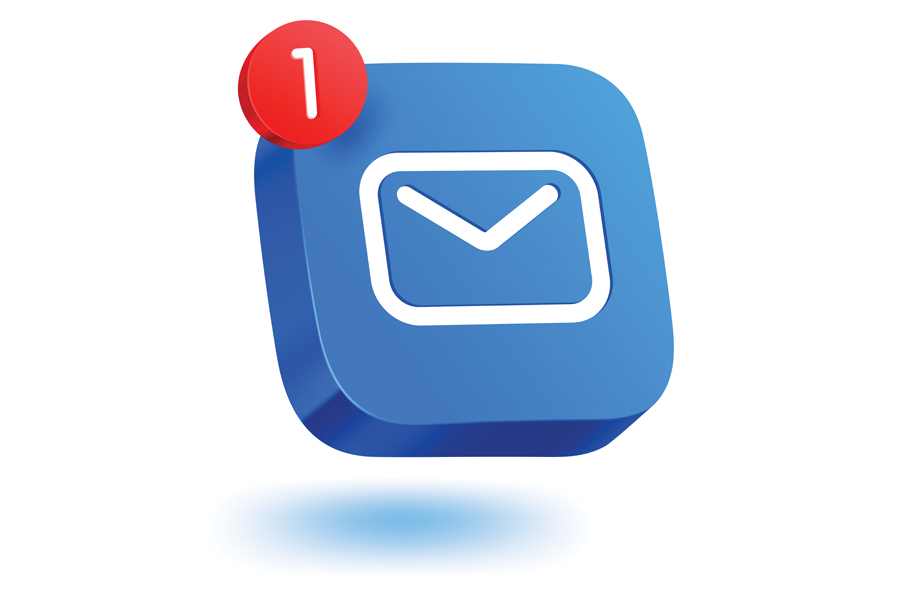E-mail marketing is a great channel to leverage repeat business
While text and social media are increasingly central to digital marketing efforts, e-mail marketing is “definitely still relevant,” according to Matt Zibell, vice president of product at TouchBistro, a POS (point of sale) provider. The company surveyed 2,600 diners in 2023 and learned that 50 percent of diners say e-mail is their preferred communication channel.
“E-mail marketing is one of the best channels to leverage to foster repeat business and is considerably less costly than mailed coupons or no promotions at all!” says Zibell. It’s also 100 percent under your control, unlike platforms like Facebook and Instagram that may suddenly change algorithms and undo your hard work.
Teddy Tsang, vice president of product marketing at Toast, another POS provider, concurs. “E-mail marketing allows restaurants to engage with their guests on a more personal level, identify the most effective messaging that can help drive sales, and build loyalty among new and existing guests.”
According to e-mail marketing software provider Constant Contact, each dollar spent on e-mail marketing nets a return of $36.
Successful e-mail campaigns depend on attractive, intriguing and engaging outgoing messages.
But that’s only half the battle. You’ve also got to capitalize on the data linked to each subscriber. Your database can retain records ranging from subscribers’ zip codes and birthdays to information about the last time they opened one of your e-mails or bought one of your pies, what they ordered, how they ordered it, and how much they spent.
E-mail Marketing Basics
What is the goal of sending an e-mail? Engagement, as demonstrated through opening messages, clicking through, and taking action.
Here are a few critical terms to understand as you optimize your e-mail database:
- List Segmentation. Subdividing your subscriber list into smaller, targeted groups based on specific criteria such as location, buying habits and type of customer (catering, take-out, dine-in).
- CTA (Call to Action). This is the action you want readers to take, such as clicking on a link in your e-mail to place an order.
- Metrics. The collective indicators that measure the success of your e-mail campaigns, such as how many recipients open the e-mail, how many click on your CTA, and how many convert (purchase).
- Open Rate. The percentage of recipients who open your e-mail.
- A/B Testing. Sending two separate offers and comparing their performance. “For example, restaurant owners and operators can test if a ‘half-off on a large pizza’ promotion generates as many sales as a ‘buy one medium pizza get one free’ deal,” says Tsang, enabling operators to “refine campaigns and send the most effective message.”
E-mail Database Management Tips
These best-practice tips apply whether you are managing your list in-house or outsourcing to a vendor. If you’re managing it in-house, you are best served by using e-mail marketing software such as Mailchimp, Constant Contact or one of their many competitors. These tools provide critical automation features as well as useful metrics.
Outsourcing your e-mail marketing? That might mean simply paying someone else to manage your e-mail marketing with one of the tools just mentioned; paying an expert to use a more sophisticated and robust e-mail marketing tool; or it could mean utilizing an integrated solution such as a POS system that includes e-mail marketing as part of the package.
In any case, here are some major factors to consider when you want to get the most out of your e-mail database.
Quality E-mail Addresses
A high-quality list is built, not bought.
“The first step to good e-mail database management is to ensure that you’re collecting as many compliant and high-quality e-mail addresses as possible,” advises Tsang. In this context, “high quality” refers to customers or potential customers who have voluntarily provided their e-mail addresses. Give your customers a reason to opt in by promising benefits such as discounts and coupons and deliver those benefits to maintain customer trust.
Some platforms include embedded tools to collect addresses. “When the e-mail database management tool is part of the same platform as other key products, restaurant owners and operators never miss an opportunity to collect the contact information of their guests, with their permission,” says Tsang. “With Toast, restaurant owners and operators have multiple touchpoints to collect a customer’s e-mail address – when a guest places an order online or via mobile payments; orders using Toast Mobile Order & Pay™; uses a gift card; and joins a restaurant’s loyalty program.”
E-mail List Segmentation
By segmenting your e-mail list, you can target e-mails to specific groups, which will translate to more successful e-mail campaigns. Depending on how sophisticated your tools and your database are, your segments can be based on geographic area such as zip code; demographics such as age; signup channel (in person, online, by text, via loyalty program); buying habits; buying frequency and more. You can even craft a survey or quiz that will glean data on customer preferences that you will link with their e-mail addresses.
Zibell of TouchBistro urges operators to “know your audience – look at their ordering history to determine what offers will resonate best with them.” You can also “personalize your promotions with birthday specials, discounts on specific meals customers generally purchase, or free delivery to drive purchases.” It’s also important to track unsubscribes and other responses to determine the communication frequency best tolerated by your customers.
Integrate with POS
Integrating your e-mail marketing database with your POS has obvious advantages. The most effective and trackable e-mail campaigns “use technology that integrates your customer database with your POS, loyalty program and online ordering,” says Zibell. “That will make it fast and simple for your customers to order what they love the most using their loyalty awards and it will streamline operations, which reduces staffing time. You’ll also be able to track what has resulted in the most sales, the best times to send promotions, and which customers you should target.”
Likewise, Tsang says that instead of managing multiple vendors, “you want a tool that lets you run your restaurant e-mail marketing activities on the same platform you already use to run your business. Managing your e-mail database with a third-party application will require additional importing and exporting and could limit the type of data you can pull into segment groups of guests. Skip the export: it should have all the guest information in one place, so you never have to export or import e-mails from a third-party tool.”
E-mail marketing has withstood two decades of challenges and is still going strong. Thanks to the ease and sophistication of current database technology, you can harness your e-mail database and the wisdom it contains to target your digital communications for optimal sales and success.
Annelise Kelly is a Portland, Oregon-based freelance writer.








